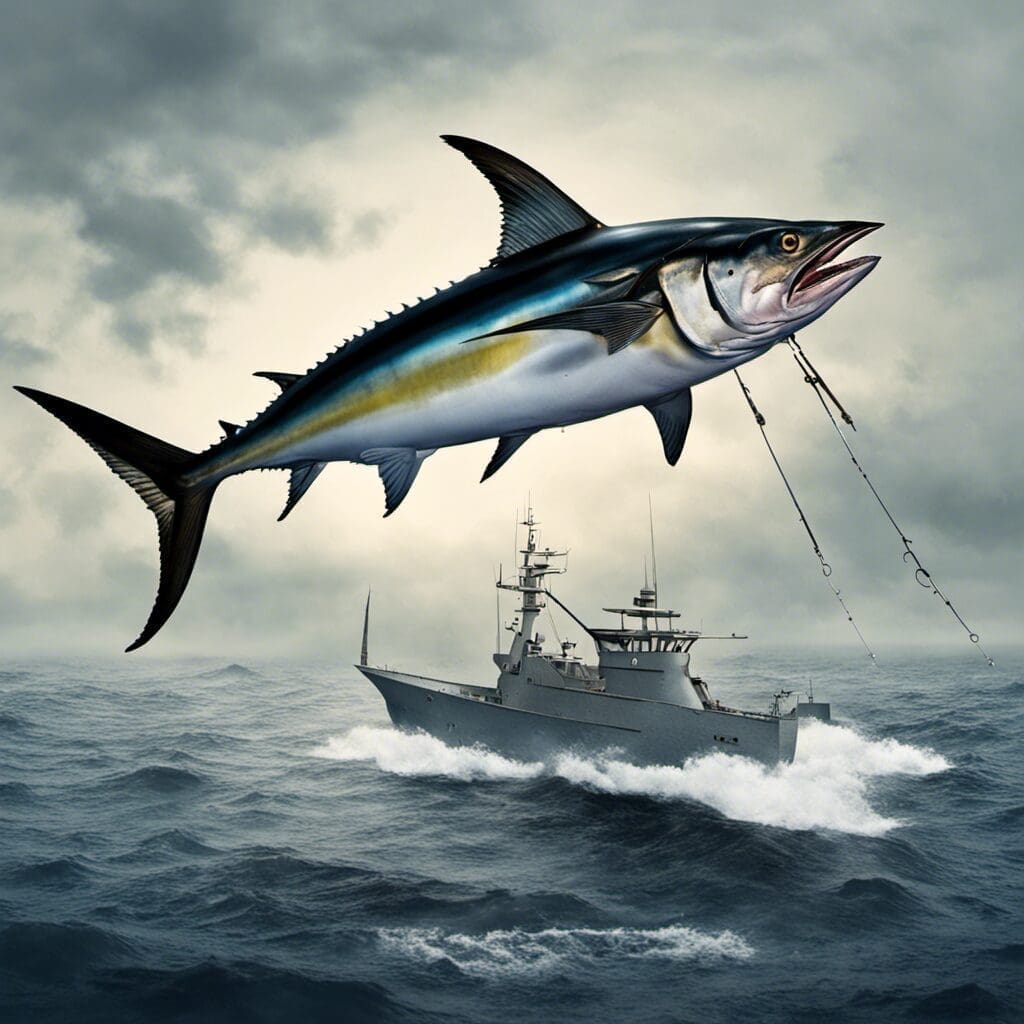Introduction
Frigate Tuna belongs to the Scombridae family, commonly known as the mackerel family. The scientific name is Auxis thazard. This pelagic fish is commonly found in sub-tropical and tropical oceans worldwide.
Conservation Status
According to the International Union for Conservation of Nature (IUCN), the Frigate Tuna currently has a conservation status of ‘Least Concern.’ Conservation efforts are ongoing, including monitoring fishing regulations and maintaining sustainable fisheries, to prevent overfishing.
Statistics
Looking at the Frigate Tuna’s statistics, we have the following:
| Length (Average) | 50 cm |
|---|---|
| Length (Range) | 30-65 cm |
| Weight (Average) | 1.5 kg |
| Weight (Range) | 1-2 kg |
| Average Lifespan | 5-7 years |
Distribution
Frigate Tuna can be found in tropical and sub-tropical waters across the world. These fish migrate across various oceans but tend to stay around coastal areas.
Habitats
Frigate Tuna are typically found in saltwater ocean regions. They prefer warmer waters with temperatures between 20-30 degrees Celsius and depth ranges of 50-250 meters.
When and Where to See
Frigate Tuna are most commonly seen during spring and fall seasons. They can be spotted throughout the day, mainly when feeding during early morning and late afternoon.
Best Fishing Locations
Fishing anglers have the best luck finding Frigate Tuna in various locations. Some of the top places include:
- Gulf of Mexico, USA
- Bay of Bengal, Bangladesh
- Great Barrier Reef, Australia
- Andaman Sea, Thailand
- Coastal waters of Japan
- Gulf of Aden, Yemen
- South China Sea, China
- Gulf of Oman, Oman
- Indian Ocean, Maldives
- Caribbean Sea, Barbados
If a specific location isn’t known, look for warm, tropical, or sub-tropical ocean waters.
How to Catch
Preferred bait for Frigate Tuna includes small squid and fishes, while chrome or silver lures work well too. The most effective fishing techniques are trolling and casting. The best fishing times are early morning and late afternoon.
Identification Guide
Frigate Tuna have a dark blue-black body on top and silvery-white belly. Their dorsal fins are yellowish with fine black margins. Compared to other Tuna species, Frigate Tuna are smaller, have fewer dorsal soft rays and a shorter pectoral fin.
Culinary (if applicable)
Frigate Tuna is often served as sashimi or sushi in Japan. It has a mild, somewhat sweet flavor, and it’s rich in protein and Omega-3 fatty acids.
Additional Information
Frigate Tuna are fast swimmers and also opportunistic feeders, eating small fish and squid. They are threatened mainly by commercial and sport fishing. The Frigate Tuna has historical and cultural significance in various coastal communities worldwide, primarily Asia, where it is celebrated in art and folklore.
References and Further Reading
For more information on Frigate Tuna, these sources and recommended readings are reliable:
- Fishbase. 2016. Auxis thazard (Lacepede, 1800) Frigate tuna. Fishbase.
- Collette, B., Amorim, A.F., Bizsel, K., Boustany, A., Canales Ramirez, C., Cardenas, G., Carpenter, K.E., de Oliveira Leite, N. Jr., Die, D.J., Fox, W. et al. 2011. Frigate tuna (Auxis thazard). IUCN Red List of Threatened Species.
- Miyake, M., Guillotreau, P., Sun, C. & Ishimura, G. 2010. Recent developments in the tuna industry. FAO Fisheries and Aquaculture Technical Paper.

